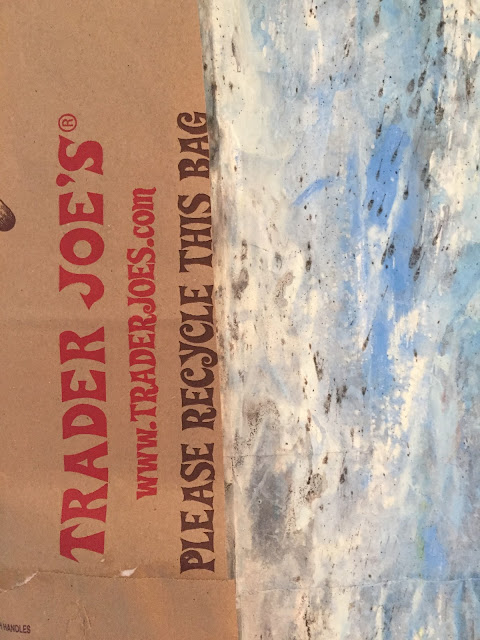 |
| The willow tree in Brooklyn whose leaves I used for the leaves with the soldiers names |
In 2016 I re-worked my painting "Maryland Willow of the Gowanus" for a group show at the Old Stone House in Brooklyn. I worked with a Holga photograph of the old stone house that I had taken. The Holga is a simple plastic camera that shoots 120mm film. For this new version of the painting I wanted to make a direct connection between events, places and time. I also incorporated an updated list of solders from the Maryland rosters. There is a lot of research going on at the Maryland State Archives that is adding to our knowledge about the Maryland troops that served in the Continental army. It is all posted online.
 |
| Leaves and sky |
I was inspired to created this work from a photograph that I saw in a book about the Old Stone House, entitled
The Stone House of Gowanus by Georgia Fraser, 1909. The house was the center of the fighting during the Battle of Long Island in 1776. Near the end of her book there is a photograph of a lone willow tree in the vacant lot where the house once stood (pp.129). The author claimed that it is the same willow that is depicted in old paintings of the house. I am not so sure that facts back up that claim. However, I became fascinated by the idea of a old Willow tree that links us back to the times of 1776; a"witness tree", so to speak. As a commemoration, my creative idea was to inscribe the names of the Maryland soldiers onto willow leaves. I then arranged the leaves in long hanging branches that represent the different fighting units. For example, all the soldiers from the Second Company are represented by leaves on one branch that hangs down in the image.
This time I wanted to documented the creative process from start to finish for use in this blog. I think viewers might find it interesting the various process and thoughts that happen as I create a work. I myself spend a lot of time thinking about how my work is shaped and constructed by my process. For me the elements of the proccess are what create the work. The photos below are the documentation of who this work came together.
 |
| Collecting a small bag of leaves |
 |
| laying out leaves on a sheet of glass- ready for transferring their image onto colored paper. |
 |
| Painting the paper roll used in the leave transfer process |
 |
| the paper after rubbing and leaf transfer |
 |
| I used different colors for the paper |
 |
| Adding the soldiers names to the leaf shapes |
 |
| Detail of the names and unit information. Ready to be individually cut out. |
 |
| Once the leaves were cut out they were kept together according to the different companies. Ready to be glued to the painting in long branch patterns. |
 |
| As usual I am working with paper shopping bags as my base material. At this point in construction, I realized that the painting would have to be both wider and taller than planned. Research showed that there are many more documented soldiers. More soldiers meant that the willow patterns would be both wider and longer. So to include all the companies and their corresponding soldiers, I had to make the painting base taller and wider. This is a simple prospect when creating on shopping bags, just add more paper. |
 |
| Blending the printed house image with background "sky" paint elements. |
 |
| Early in the layering paint process. |
 |
| Laying out the company across the top and starting to fill in the leaves creating branches. |
 |
| Almost done. |
 |
| Installing at the Old Stone House |
 |
| The finished install |
The painting installed at the "Sediment" group show at PS 122 Jan 2019


























































